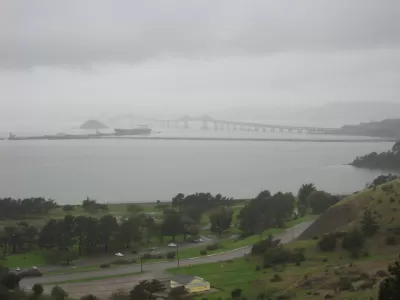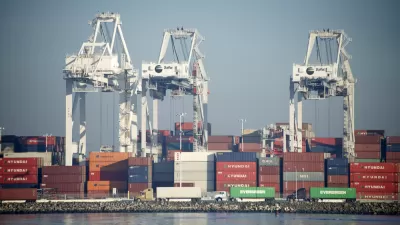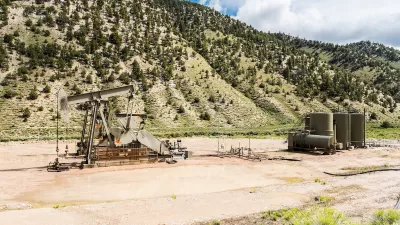Can freight trains and a scenic shoreline park along San Francisco Bay coexist, or are they incompatible uses? The East Bay Regional Park District voted to remove old rail tracks that BNSF Railway wants to reactivate. A local court may decide.

Cabanatuan provides the historical context of the rail line and the city of Richmond.
BNSF Railway’s predecessor, the Atchison, Topeka and Santa Fe Railway, brought Richmond to life in 1900 when it located its western terminus there. The railroad built a large rail yard near what became Point Richmond and a tunnel and tracks to Ferry Point on the shoreline, where passenger trains rolled onto barges to San Francisco and freight trains were taken to other bay ports.
When the park district bought the right of way in 1991 via eminent domain, the railroad was granted an easement to run trains to two industrial sites, both of which are now defunct.
What's not mentioned in any local or regional media coverage of the controversy is the vital role that rail plays in goods movement, not just from an economic but also an air quality perspective as well, even when the trains are being pulled by diesel-powered locomotives.
"[O]ne rail car can haul as much as four tractor-trailer trucks," according to a recent New York Times article (posted here) about a $100 million effort led by the New York City Economic Development Corporation to invest in local freight rail infrastructure so as to reduce truck traffic and emissions.
FULL STORY: Train tussle: Campaign fights plan for ‘wall of railcars’ on Richmond shoreline

Alabama: Trump Terminates Settlements for Black Communities Harmed By Raw Sewage
Trump deemed the landmark civil rights agreement “illegal DEI and environmental justice policy.”

Planetizen Federal Action Tracker
A weekly monitor of how Trump’s orders and actions are impacting planners and planning in America.

How Atlanta Built 7,000 Housing Units in 3 Years
The city’s comprehensive, neighborhood-focused housing strategy focuses on identifying properties and land that can be repurposed for housing and encouraging development in underserved neighborhoods.

In Both Crashes and Crime, Public Transportation is Far Safer than Driving
Contrary to popular assumptions, public transportation has far lower crash and crime rates than automobile travel. For safer communities, improve and encourage transit travel.

Report: Zoning Reforms Should Complement Nashville’s Ambitious Transit Plan
Without reform, restrictive zoning codes will limit the impact of the city’s planned transit expansion and could exclude some of the residents who depend on transit the most.

Judge Orders Release of Frozen IRA, IIJA Funding
The decision is a victory for environmental groups who charged that freezing funds for critical infrastructure and disaster response programs caused “real and irreparable harm” to communities.
Urban Design for Planners 1: Software Tools
This six-course series explores essential urban design concepts using open source software and equips planners with the tools they need to participate fully in the urban design process.
Planning for Universal Design
Learn the tools for implementing Universal Design in planning regulations.
Jessamine County Fiscal Court
Caltrans
Institute for Housing and Urban Development Studies (IHS)
City of Grandview
Harvard GSD Executive Education
Toledo-Lucas County Plan Commissions
Salt Lake City
NYU Wagner Graduate School of Public Service





























